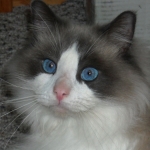We seem still to be talking past one another here.DeVilbiss Marketing wrote:Grant -
Expiratory puffing occurs when a patient who normally breathes in and out through the nose begins to exhale in short, high-volume puffs through the lips.
This breathing pattern can create a poor signal that can interfere with therapy. The IntelliPAP AutoAdjust tracks expiratory puffs, but does not respond. Increasing pressure would not reduce puffs and may increase puffs. Exhale puffing in excess of 30 per hour should be monitored. Have you tried a dual airway interface like the Hybrid?
As an FDA regulated medical device manufacturer, DeVilbiss cannot legally provide therapeutic input or medical advice which is why we referred you back to your treating physician.
We have a detailed document that explains how the IntelliPAP AutoAdjust alorithm works and the parameters it monitors.
http://www.devilbisshealthcare.com/file ... T-2089.pdf
I hope this helps. Please let me know if I can be of further assistance.
Going by the definition provided above, a person who uses a full-face mask generally cannot be described as one who "normally breathes in and out through the nose." Such patients have already experienced problems using a nasal-only form of mask. (At Kaiser, my provider, you cannot even try a full-face mask until it's established you cannot tolerate the nasal-only version.) It's unclear to me how the rest of the discussion above – which only applies to people who normally breath in and out through the nose – has anything to do with the question I asked.
As for your later question, "Have you tried a dual airway interface like the Hybrid?"... In what way is either of my two full-face masks NOT a "dual airway" interface? They both provide pressurized air to my mouth and nostrils simultaneously.
One correction: I am not asking for "therapeutic input or medical advice" here. DeVilbiss has definitively explained what the EPI means for people who normally breathe in and out through the nose: I'm simply asking for a similarly definitive explanation of what it means for people who normally DON'T breathe in and out through the nose. If providing that information is prohibited by the FDA, then DeVilbiss has already violated the rules by giving the explanation already provided for everyone else.
If the real answer is DeVilbiss does not know what the EPI means for people who do not normally breath in and out through the mouth, please just say so. If DeVilbiss needs to do some research on this device to fill in the apparent knowledge gap, I would be happy to participate as a subject. It's upsetting enough to have sleep apnea: I don't need the extra stress of trying to get my machine's manufacturer to explain what their machine's messages mean.










